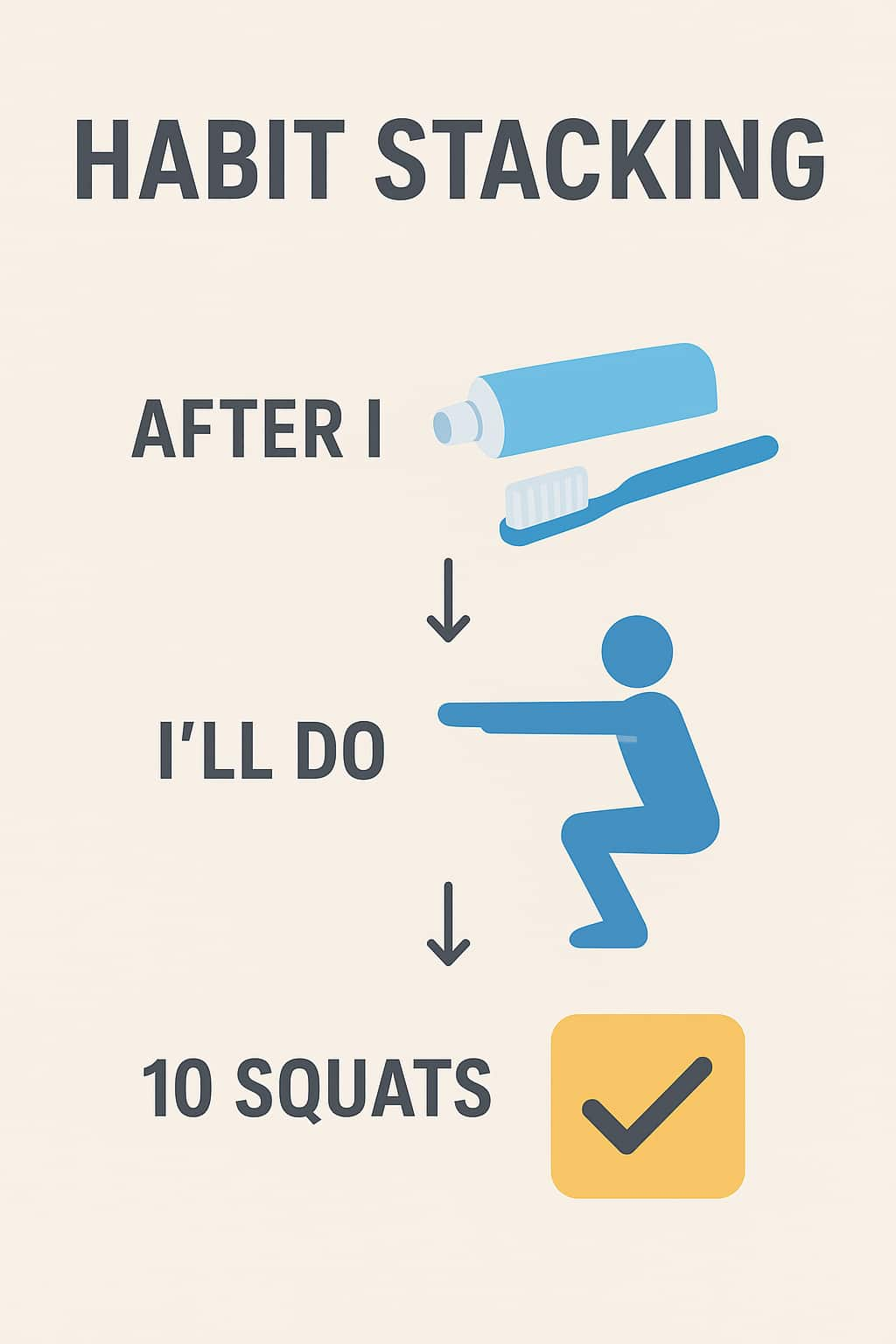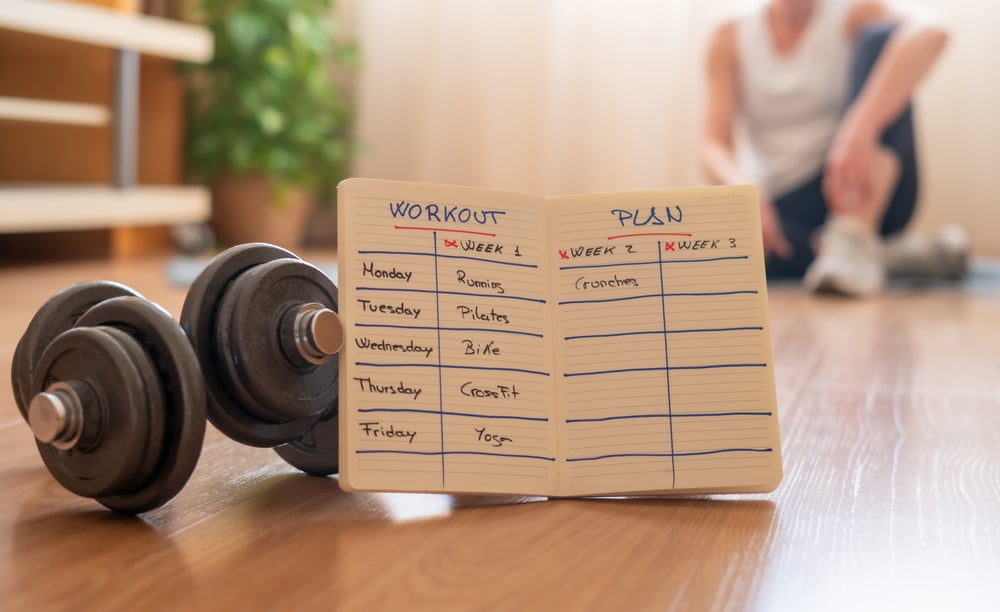How to stay consistent with your workout plan


Many people start working out with enthusiasm at the beginning of a new year or new month, but after a few days, they lose interest. This is where most people stumble. However, the real secret to fitness is hidden in consistency, not in a day, but in small daily efforts that make significant changes. How to stay consistent with your workout plan by building habits, staying motivated, and tracking your progress regularly.
In this article, we will learn how to be consistent in your workout plan, how to stay motivated, and how to develop habits that will become a part of your life, not an extra burden.
According to Harvard Health Publishing, regular physical activity not only improves fitness but also enhances mood and energy levels.
Motivation and goal setting
Starting a workout is like planting a seed. And to turn that seed into a tree, you need regular water, which is your motivation and goal. These two things are the most important to maintain consistency.
Find your ‘why’
Most people start fitness for some external reason, such as losing weight quickly, looking good, or competing with a friend. But unfortunately, such motivation does not last long.
To be consistent, you need to find your deeper purpose, which will be personal and internal to you. This is the energy that will pull you to work out even on tough days.
Focus on long-term internal goals, not short-term motivation:
- Your goal shouldn’t be just a number on the scale (losing weight). Instead, think about whether your goal is to not rely on others to walk you when you’re 60 or to live a healthy life.
- Temporary appeal (a beautiful figure) won’t last long. Instead, your goal should be to improve your mental health and reduce anxiety and depression through regular workouts.
- Whether your reason for doing so is to increase your energy and vitality by freeing yourself from the pressures of showing off to others or external pressures, so that you have more energy at work every day, and can pursue your favorite hobbies.
Set SMART goals


As Mayo Clinic explains, setting achievable goals and tracking small wins helps sustain workout motivation in the long run.
Don’t rush straight to a big goal. This can lead to frustration. Instead, break your goals down into small, measurable steps. This step-by-step approach is the most effective way to maintain consistency. This requires following the SMART (Specific, Measurable, Achievable, Relevant, Time-bound) method:
1. S – Specific: Make your goal specific. Instead of setting vague goals like “I will get fit” or “I will exercise more,” say, “I will walk briskly for 30 minutes every morning at 7 am” or “I will do weight training at the gym for an hour every Monday, Wednesday, and Friday evening.”
2. M – Measurable: So that you can track your progress. Instead of just saying “work out more,” say, “I will walk briskly for a total of 150 minutes per week” or “I will learn to do 20 push-ups.” Setting goals with numbers will help you see your progress and stay motivated.
3. A – Achievable: Make the goal fit your current abilities and reality. If you haven’t exercised for a long time, don’t aim to lose 10 kg overnight. Instead, set realistic goals, such as “I will try to lose 1-2 kg in the first month” or “I will practice walking one extra day each week.”
4. R – Relevant: Your goal should be relevant to your overall life purpose. If your goal is to live a healthy life, then your workout routine should support that goal. Someone else’s goals or desires should not influence it.
5. T – Time-bound: Set a deadline. Without a deadline, you are more likely to procrastinate. Say, “I will be able to run 5 kilometers in the next 6 weeks.” A deadline will force you to follow a specific deadline.
Celebrate progress
Recognize your small accomplishments to stay consistent. Your long-term goal might be to lose weight. But your short-term goal might be to go to the gym three days in a row or run for 20 minutes straight.
Reward yourself when you meet a short-term goal. (Example: buying yourself new workout gear or getting a relaxing massage, but not food).
Habit building and routines
The ‘habit stacking’ method


This method links a new habit to an existing one. It doesn’t require a separate motivation to start the new one.
Formula: After doing [your existing habit], I will do [my new exercise routine].
Example: “Right after brushing my teeth in the morning, I will do 10 push-ups and 10 squats.”
Example: “Right after lunch, I will go for a brisk walk for 20 minutes.”
This way, your brain will gradually see exercise as a natural next step to another task, which makes it easier to stick to.
Simplify your preparation
To eliminate laziness or ‘hard to get started’, make your preparation tasks as easy as possible. This process is called ‘reducing friction’.
Evening preparation: The night before, lay out your workout clothes, shoes, water bottle, and headphones by the door or next to your bed. When you wake up in the morning, you don’t have to worry about them; just get dressed and go out.
Have a ‘Plan B’ ready: If, for some reason, your gym or walking routine is canceled (e.g., rainy day or gym closed), have a short Plan B ready to do at home. For example: “If it rains, I’ll watch YouTube and do yoga for 20 minutes.” This will help you avoid ‘zero days’ (days when nothing gets done).
Respect your schedule as a sacred routine
Set a specific time for exercise (e.g., 7 am or 6 pm) and treat it as important as any other task, such as a meeting or a doctor’s appointment.
Specificity: Don’t be flexible with your time. Work out at the same time every day (if possible). This will also help your body’s biological clock get used to it.
Start short: Even if you don’t feel like working out for 30 minutes, start with just 5 minutes. Research says that once you start, you’ll usually finish the entire session. Five minutes is a ‘ridiculously small’ start to maintain consistency.
Overcoming obstacles and accountability
Common barriers and coping strategies
Prepare in advance for the reasons people usually skip workouts. These strategies will keep you from straying from your routine, even in difficult situations:
Lack of time: A busy schedule is a significant obstacle to consistency. Don’t be discouraged if you can’t find time for thirty minutes at a time. Instead, do 3 10-minute ‘micro workouts’ a day. Even less is better than skipping it altogether.
Fatigue or lack of energy: There’s no need to do heavy or intense exercise if you feel tired. Follow the ‘movement is medicine’ principle during this time. Just walk for 5 to 10 minutes or do light stretching. Even a little movement can improve your mood and energy levels.
Bad mood or laziness: When laziness sets in, tell yourself to do just one thing. Follow the ‘5-minute rule’. Say, “I’ll just work out for 5 minutes.” Most of the time, once you start, you’ll finish the entire session.
Injury or illness: If you get injured or sick, give your body enough rest to recover. But this doesn’t mean you have to stop exercising altogether. If you hurt your leg, skip that part and do light exercises on your arms or upper body. Seek expert advice if necessary.
Ensuring Accountability
Accountability is the process that blocks your ability to deviate from your routine. It acts as an external shield to protect your consistency.
Social Accountability
Workout Partner: Tell a friend or family member about your plans. If possible, find a workout partner. This will help you motivate others if one person is absent.
Public Announcement: Announce your weekly or monthly fitness goals on social media or with friends. When others know your goals, the pressure to meet them makes you more accountable.
Self-Accountability and Tracking
Workout Log: Write down your daily workouts, their duration, and how you feel in a diary or mobile app. This will help you track your progress and remind you on bad days how far you have come.
Check Box Method: Put a big ‘tick’ mark on a calendar for each successful workout. This visible consistency will discourage you from breaking the streak. This method is called “Don’t Break the Chain”.
Rest and Recovery
The Importance of Muscle Recovery
The concept of ‘No Pain, No Gain’ is outdated. The truth is, ‘No Rest, No Results’.
Muscle Building: During heavy exercise, tiny ‘micro tears’ are created in muscle fibers. During rest, the body repairs this damage and makes the muscles stronger. Without adequate rest, the muscles remain weak, and you will not be able to perform well in the next workout.
Injury Prevention: Fatigue and overtraining increase the risk of injury in the body. Rest reduces this risk and helps you continue your fitness journey for a more extended period of time.
Adequate Sleep


Sleep is the most important form of recovery. It not only relieves fatigue in the body but also helps in mental health and hormone regulation.
Sleep Goals: Aim for at least 7 to 8 hours of uninterrupted sleep every night.
Workouts and Sleep: Avoid doing too much intense exercise before bed, as it raises your core body temperature and can make it difficult to sleep. Finish your workout at least 2 hours before bed.
Active Rest and Recovery
Rest days don’t always mean lying down. Occasional active rest can help muscles recover.
Schedule rest days: Include at least 1-2 days of complete rest or active rest days in your weekly routine.
FAQ
Q: How can I stay consistent with my workout plan?
A: Set realistic goals, schedule workouts, and track progress. Stay motivated by mixing up routines and celebrating small wins.
Q: What should I do when I lose motivation to work out?
A: Try new exercises, find a workout buddy, or remind yourself of your goals. Consistency grows when you make fitness fun and rewarding.
A few words from How to stay consistent with your workout plan
Maintaining consistency in your workouts is not a one-day task; it is a lifestyle. Starting with small goals and gradually increasing your limits is the key to real success. Sometimes your morale may decrease, but remember, in that moment, Consistency beats intensity.
The habit of moving forward little by little every day, noticing your progress, and loving your body and mind is what will make you fit, strong, and confident in the long run.









